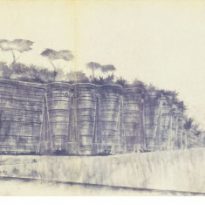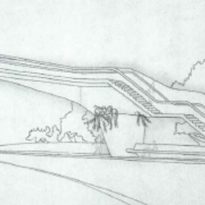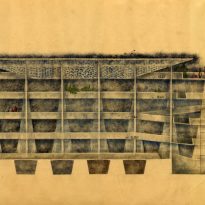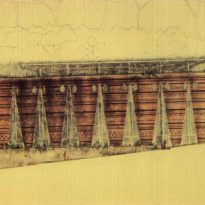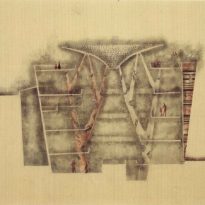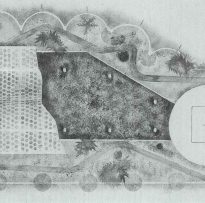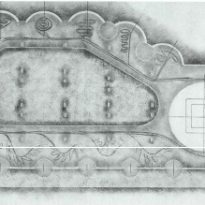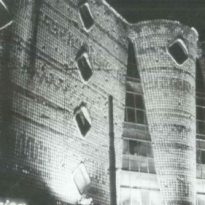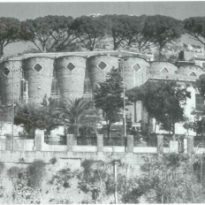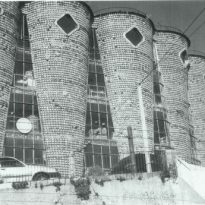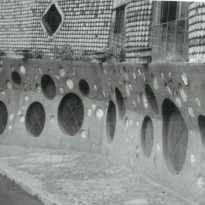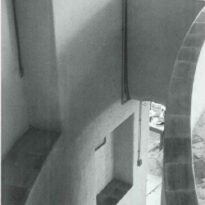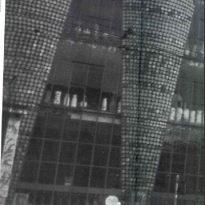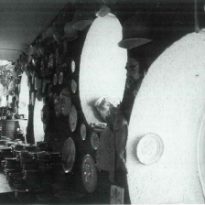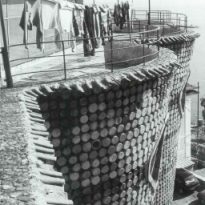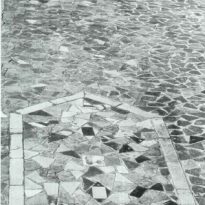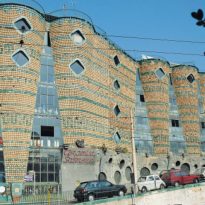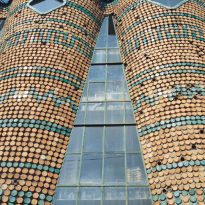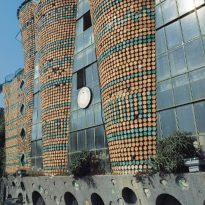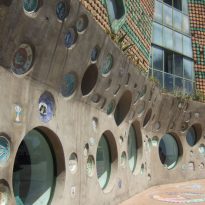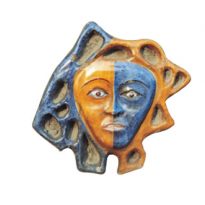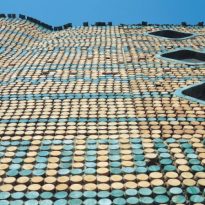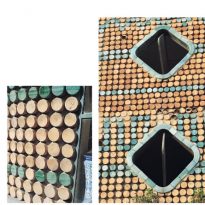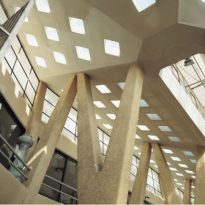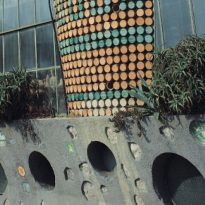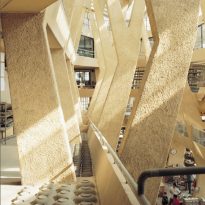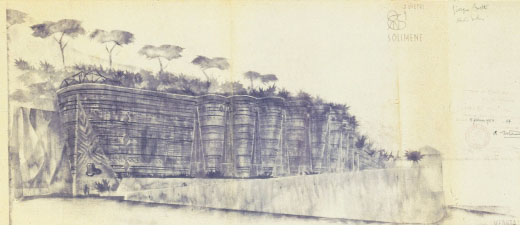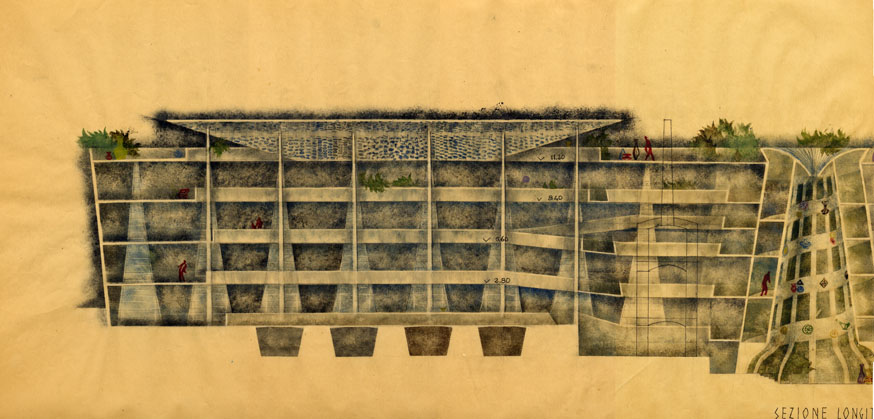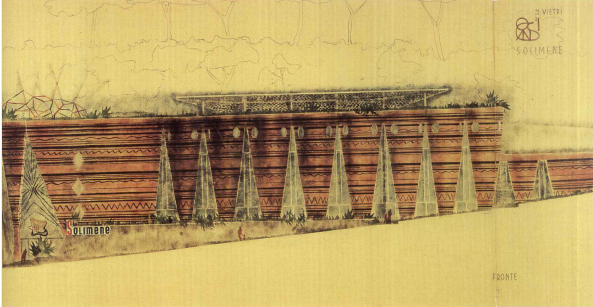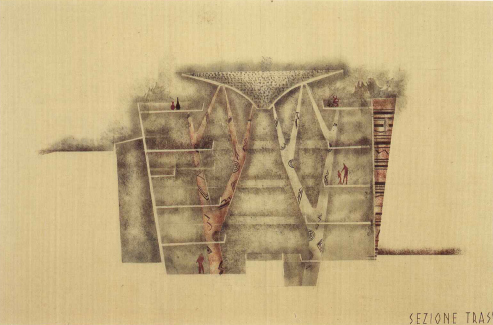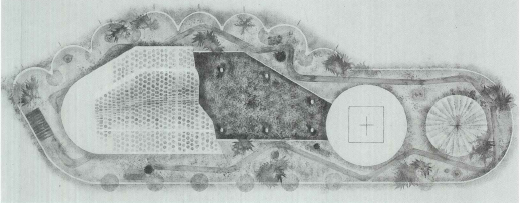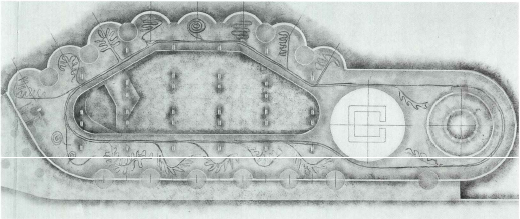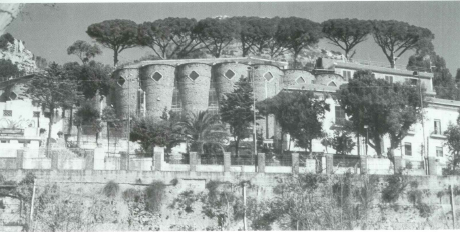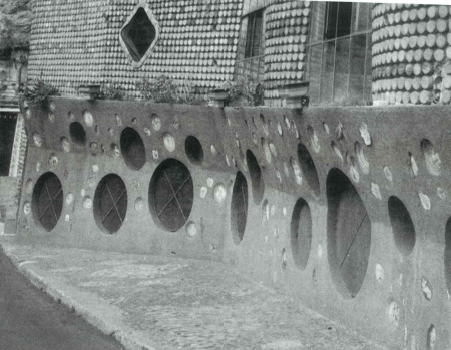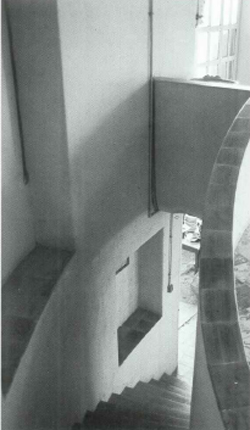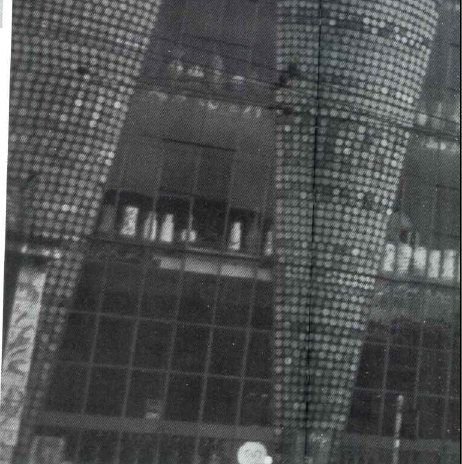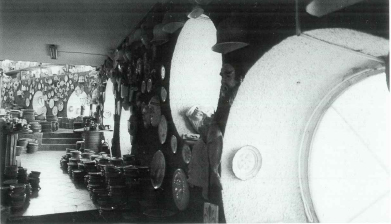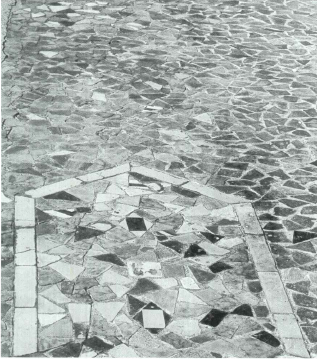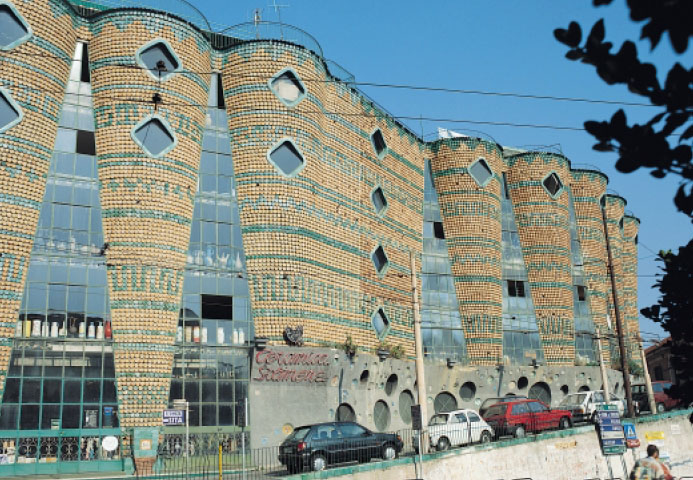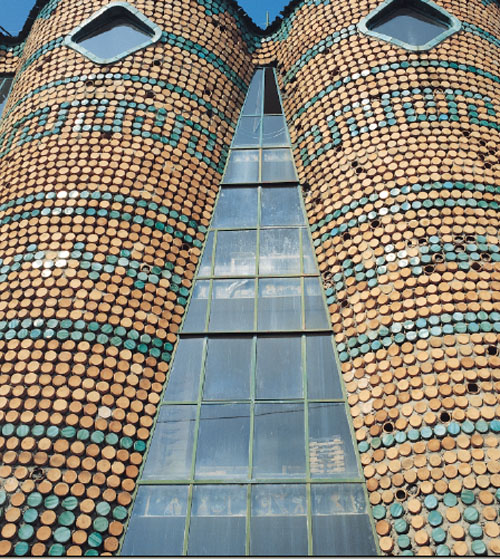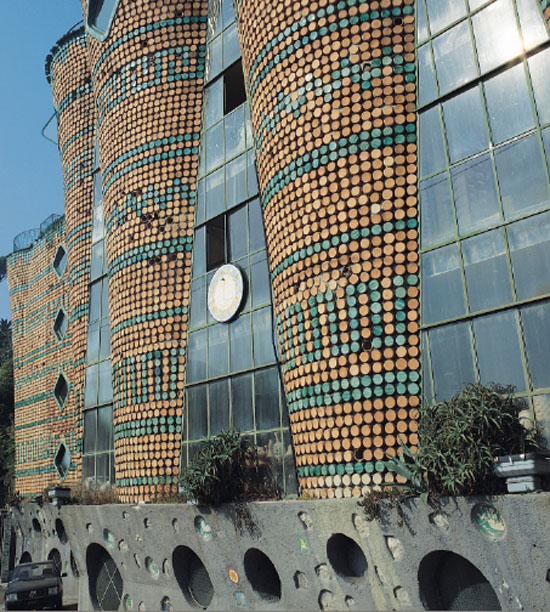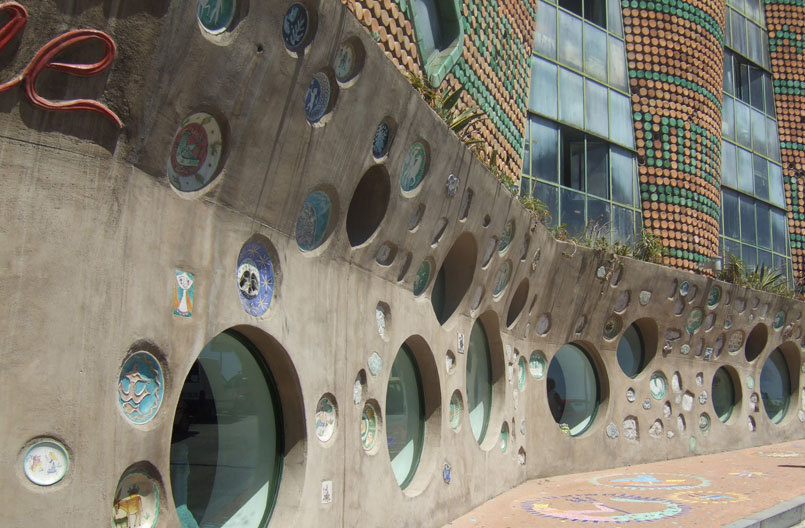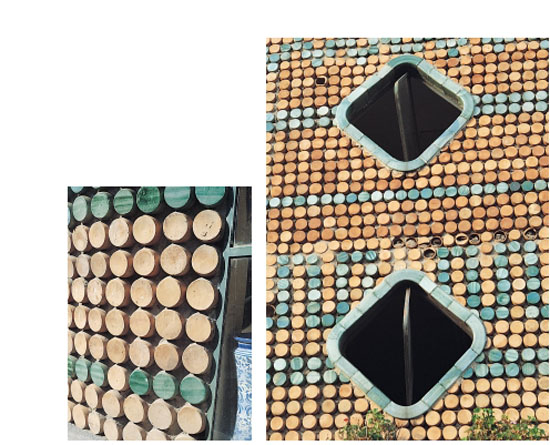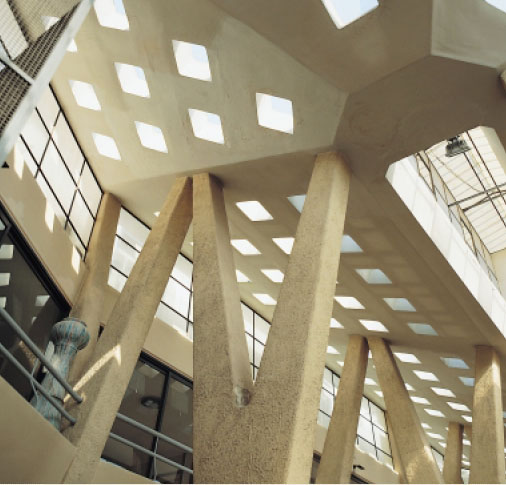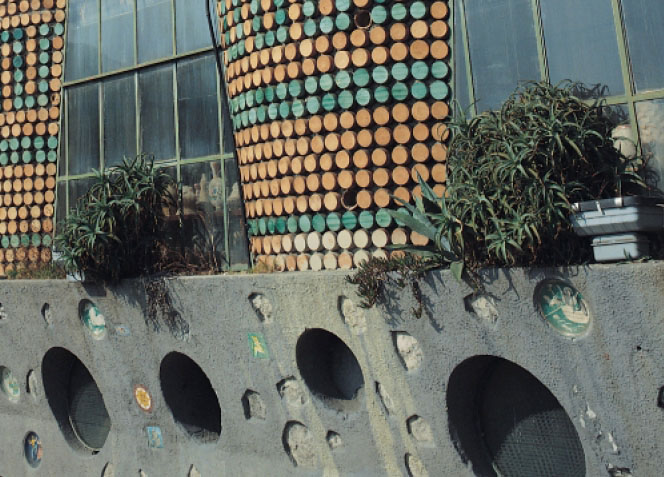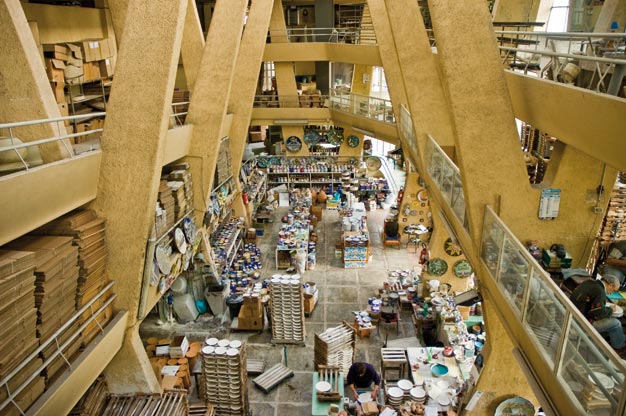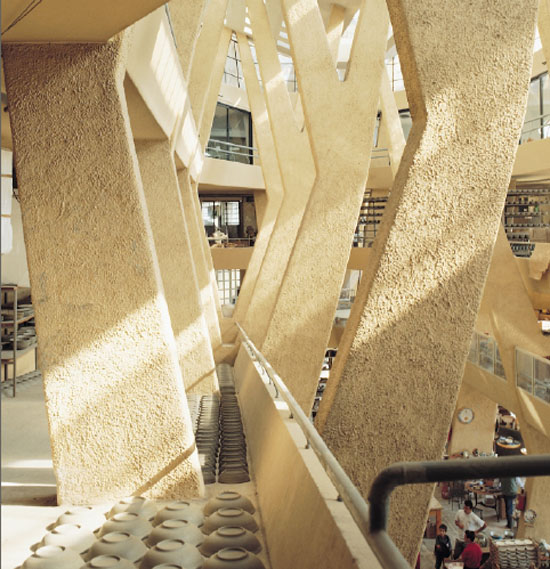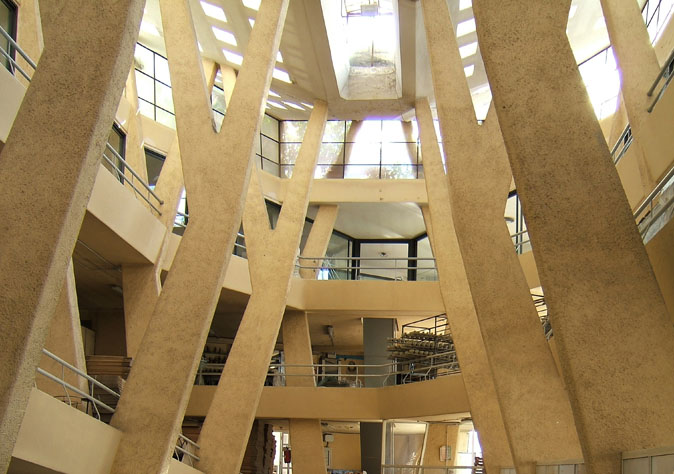Solimene ceramic’s factory
Introduction
Also known locally as The Palace of Ceramics, The Solimene Factory was built by Paolo Soleri between 1954 and 1956.
This work is built into the rock of the mountain and is characterised externally by the sight of thousands of cilindrical brick pillars in red and green. The factory evolves into a continuous space which, structurally, follows the different phases of design and construction of ceramic products: from the modelling of clay in the lathe, to the decoration and subsequent cooking.
Story
In 1950, Paolo Soleri, an architect graduated from the Polytechnic of Turin, returned to Italy from the United States after having worked with Frank Lloyd Wright for eighteen months on Taliesin West. Already at that time, Wright was principally concerned with the aesthetics of work. Paolo Soleri, in contrast, favoured a cosmic analysis, concerned with the problem of man and his habitat. Soleri harshly criticised Wright‘s Broadacre City, the urban expansion which, by his judgement, would lead to an anaemic and lethargic society. For his subversive attitude, he was asked to leave Taliesin in 1948.
In his incessant rambling across Italy, on board a bus which he used as a “house-studio”, Soleri stopped in Vietri sul Mare to learn the ancient art of ceramics. It was during one of these meetings with the Solimene family of potters that they entrusted to him the construction of a new factory.
Location
It was built at the entrance to Vietri sul Mare, in the province of Salerno, in the South of Italy. The municipality forms part of the Amalfi coast. To get to the factory from the town, you must pass through an underground passageway, artistically decorated with ceramics from Solimene.
Concept
The Solimene ceramics factory cannot be associated with any preconceived formal type or blueprint. This project was conceived through the search for and exploration of organic and expressionist architecture.
An association with the work of Gaudi cannot be swept aside; not only in the composition of ceramics but also with the concept of petrified trees found in Parc Guell in Barcelona.
On other occasions, to observe the work from its exterior façade, which more than a skin resembles a shell, reminds one of shells of prehistoric animals.
Constructive typology
Soleri studied the constructive typology and patterns of functional distribution in various superimposed levels and steep slopes.
The communication between stairs, curbs and signposted external pathways appears on the various levels of terraces, so typical of the settlements of the Amalfi coast, until reaching the ground level where the finished product arrives, ready for sale.
Paolo Soleri reinterprets this cycle, inspired not only by the Guggenheim Museum in New York or the Anderton Court Building, but also by the open work spaces of Wright: the offices of the Johnson Wax Building in Racine or the Larkin Building in Buffalo. This is transferred to the exterior and interior of the building: illuminating the façade which looks toward the sea with large triangular windows; while inside, numerous bursts of light enter through the perforated latticework of ceiling.
Spaces
The floorspace available is long and narrow, obtained by excavating into the rock.
Internally, it is divided into five floors, formed by a large helicoidal ramp which overlooks the central area of the building, creating the different work spaces.
On the ground floor, they display and sell the finished products. From this level, the ramp leads to the different levels of processing, where each worker and artisan can freely choose his workspace, then finish and leave his piece.
This ramp is supported by large inclined pillars. Solimene follow the traditional system of ceramics production, with wood-burning ovens, where the process is completed vertically: beginning on the top floor and finally arriving on the ground floor where pieces are decorated and fired. Soleri developed an articulated, ogival factory. It is not centred on one space, but rather on various spaces at the same time.
Structure
The structure is formed of a “forest” of dendriform (tree-shaped) pillars of concrete, without beams, connected and joined by the internal ramp which winds up the five floors. These pillars resemble parallel lines of petrified trees whose branches join at the top, serving to support the illuminating, perforated roof.
The exterior façade is far from conforming to a classical model. It is formed by a series of conical pieces which point downwards, and rhomboidal windows placed successively as external structural elements, in conjunction with the broad triangular windows.
Materials
Without a doubt, one of the elements which distinguishes and characterises this project is the “cladding element” used on the façade. Circular bases of amphoras, of round terracota vases, the classic “mummarelle” (a protagonist for centuries in Roman architecture), bottles lacquered in green and many other pieces are embedded in the concrete cladding and decorate the façade.
These lacquered ceramic elements not only help with the insulation of the walls, but also with the maintenance of the façade and, in this case, with the intrinsic character of the work. Their use also provides a modern reinterpretation of the use of ceramic, an eternal element the whole length of this zone in Italy.
The perforated design of the roof which contributes to the luminosity of the factory has been made using a framework of wood, and the construction of the ramp, pillars and general structure uses reinforced concrete.
Video
